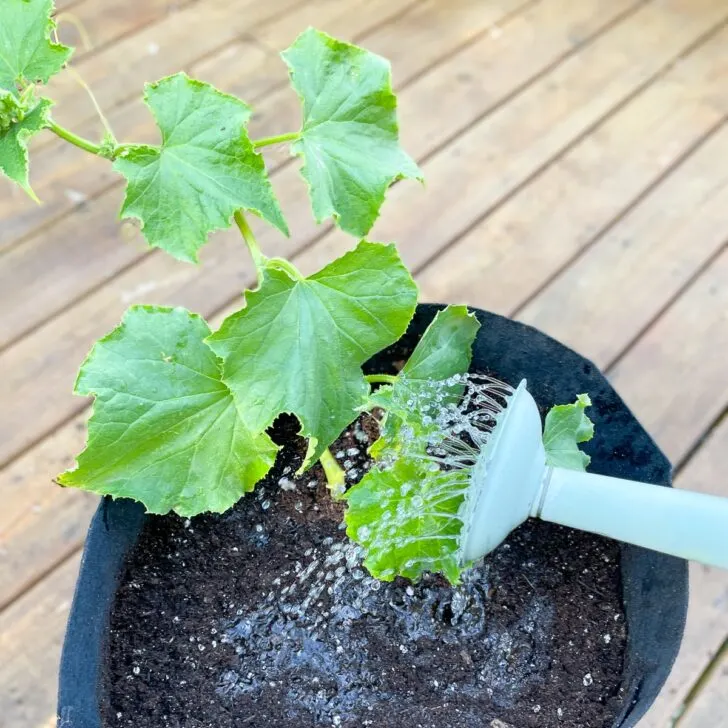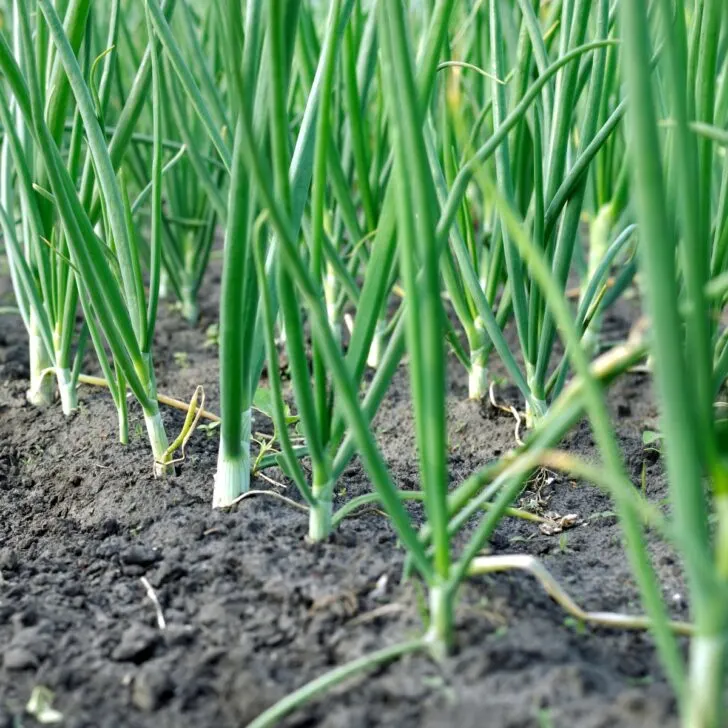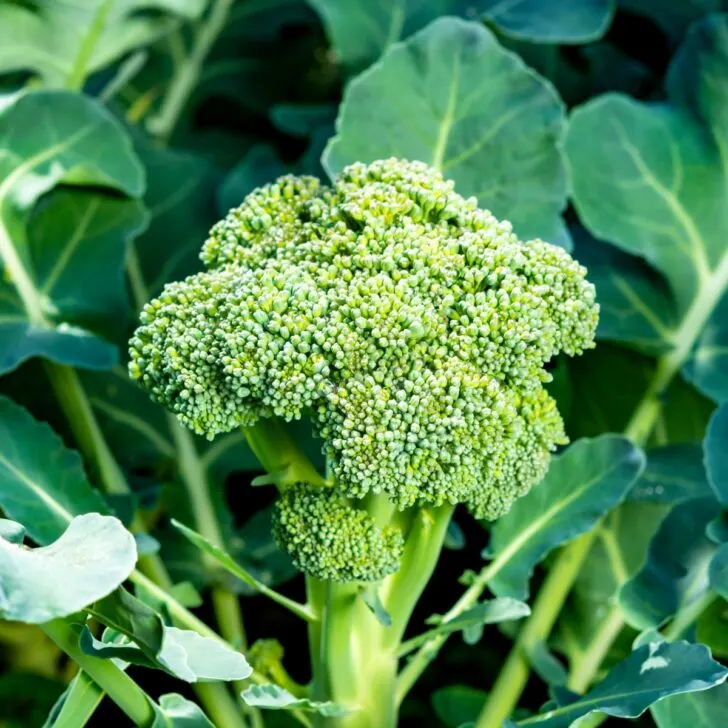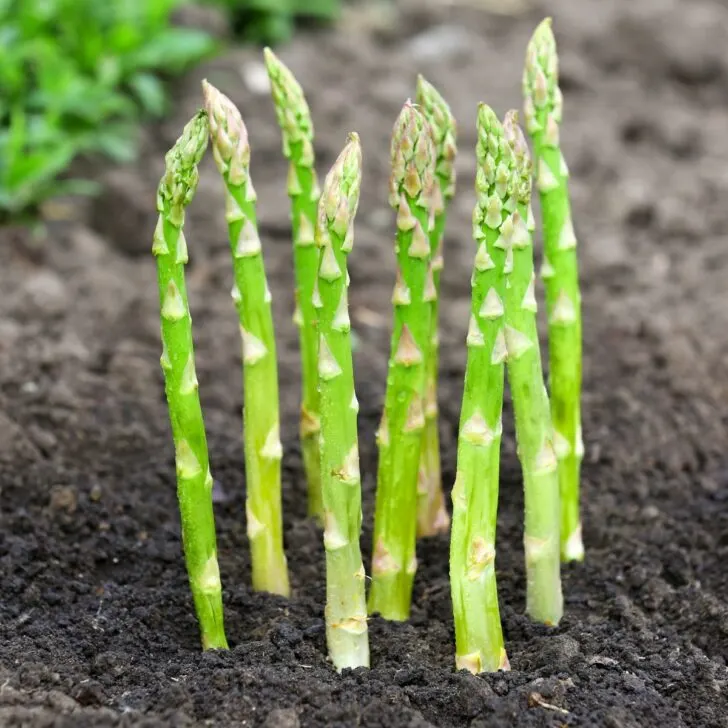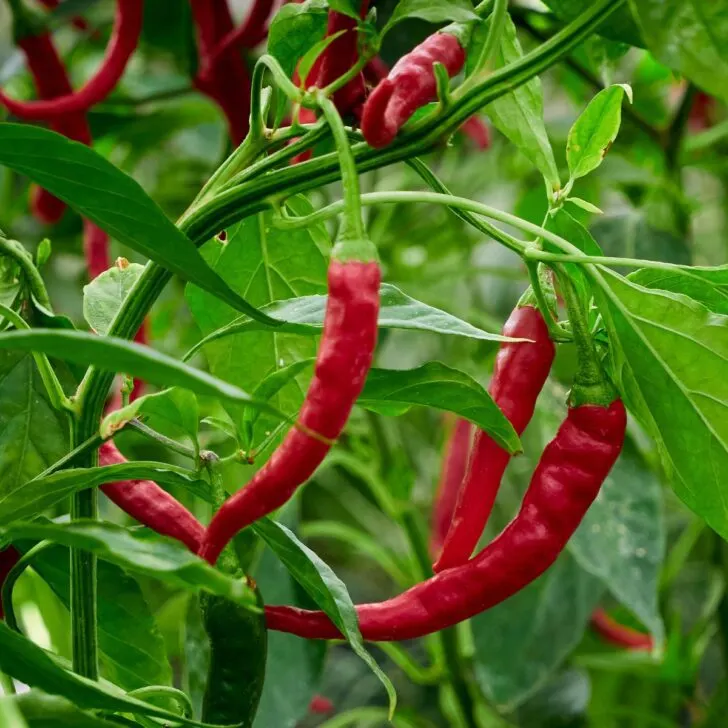Ready to grow your own thyme? Follow this in-depth guide on growing thyme from seed or cuttings, and enjoy fresh herbs in no time!
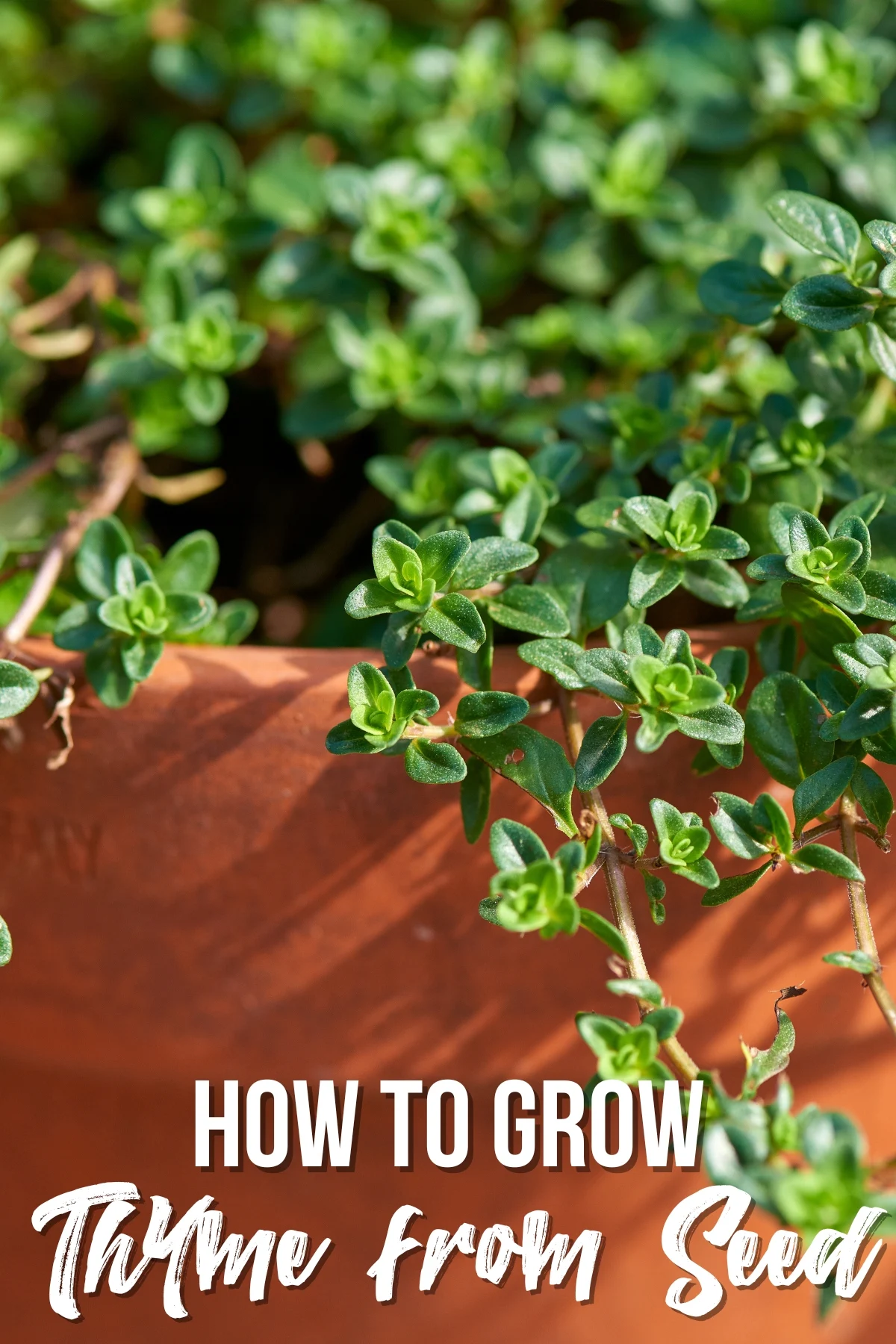
If you're a fan of hearty stews, aromatic roasts, or simply a well-seasoned meal, you've probably crossed paths with thyme. This versatile herb isn't just a staple in various cuisines around the world. It's also an easy plant to grow in a window box or a pot by the back door!
Whether you're a seasoned gardener or a beginner looking to add some green to your kitchen windowsill, this guide will take you step by step through the process of growing thyme from seed or cuttings. By the end, you'll be well-equipped to grow, care for, and harvest your own thyme plants.
Let's get growing!
This post contains affiliate links for your convenience. Purchases made through these links may earn me a small commission at no additional cost to you.
Things to know about growing thyme
Thyme's fragrant leaves and summertime profusion of flowers make this plant worth growing for culinary or ornamental uses. In the landscape, thyme's perennial, low-growth habit makes it a good understory plant in shrub gardens or as a groundcover. Most types reach a maximum of 15 inches tall, and some grow prostrate.
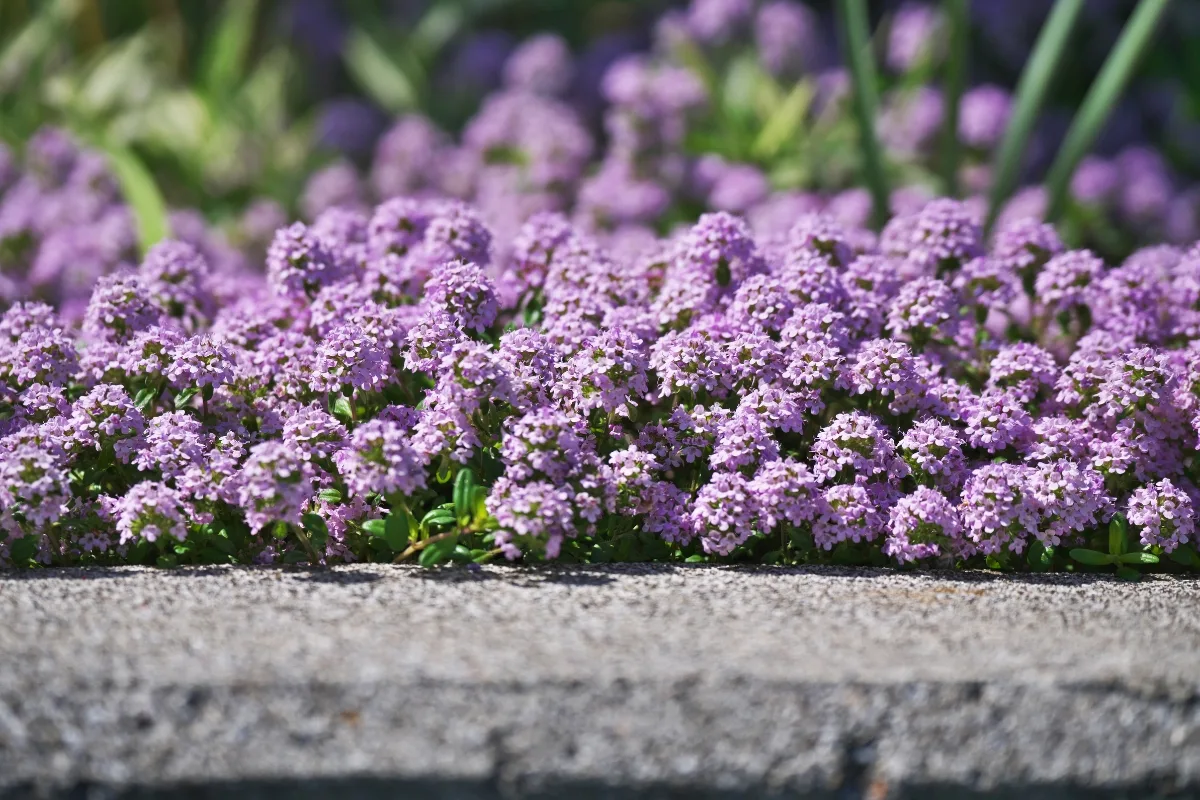
In summer, thyme plants are adorned with a profusion of small white, red, or lavender flowers that bees love, and thyme honey is a sought-after culinary specialty. The branches and stems of this semi-evergreen plant become woody over the years, but other than a bit of pruning, it needs little maintenance and rewards you with color, fragrance, and helpful garden visitors.
As a kitchen herb, the leaves and flowers of thyme are tasty both fresh and dry. Cooks often use it in stews, casseroles, roast meat dishes, and as a garnish on vegetables. In addition, thyme's scent is an excellent addition to potpourri, essential oil, and as an ingredient in personal care products.
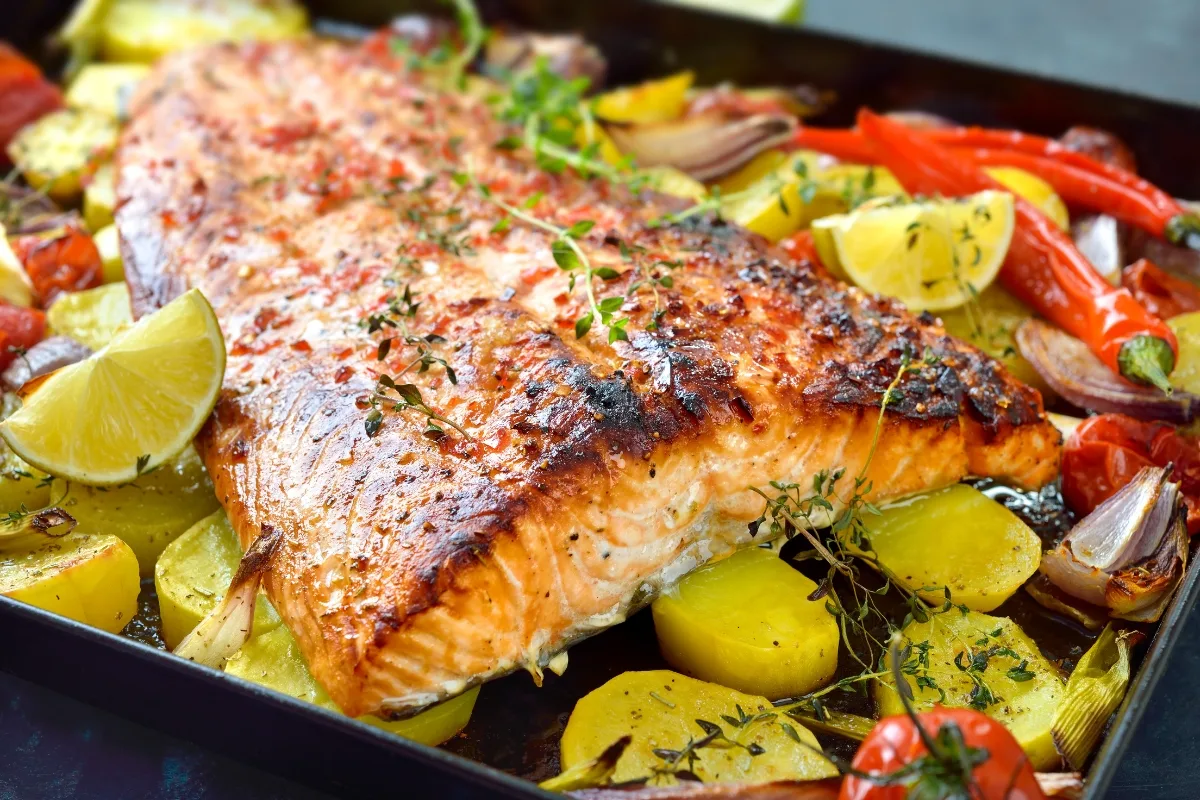
Thyme varieties
Thyme is related to mint in a genus with over 300 species, many with unique and desirable flavors and scent. In addition, all varieties of thyme are valuable for bringing honey bees and other beneficial pollinators to the garden.
Here are some of the most well-known thyme varieties:
- 'Thyme vulgarise’, or garden thyme, is a popular culinary variety growing up to 2 feet tall.
- 'Argenteus' is a silver-leafed type with excellent culinary flavor.
- 'French Thyme' is similar to garden thyme but milder in taste.
- 'Wild Thyme' has low-growing and upright cultivars and many flower colors.
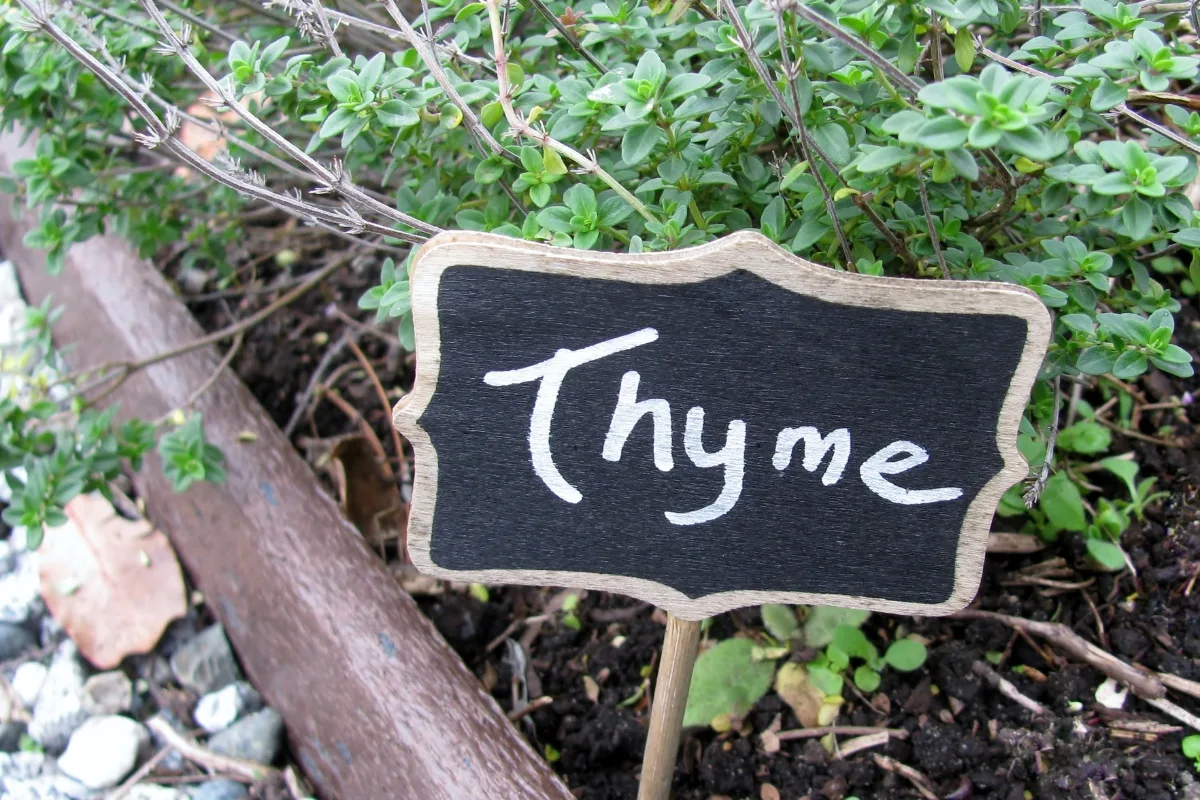
The following types have unusual flavors that aren't typically found at the grocery store:
- 'Herba-Barona' has the distinct scent of caraway seeds and can be used as a substitute.
- 'Orange Balsam' smells like oranges and can be used to flavor savory and sweet foods.
- 'Citriodorus' or lemon thyme has a strong lemon scent and attractive, variegated leaves.
These varieties are gorgeous in the garden:
- 'Wooly Thyme' has a prostrate growth habit and slightly furry, grey leaves and stems.
- 'Creeping Thyme' forms luscious, scented mats with crimson, white, or mauve flowers a few inches high.
Now, while these varieties might have their differences, they do have a lot in common when it comes to growing needs. However, choosing the right variety for your garden can depend on your local climate, soil conditions, and of course, your culinary preferences.
How to grow thyme plants
As with many herbs, growing thyme from seed takes longer to reach a harvestable size. However, it has advantages, including widening your choice of varieties and being less expensive than buying plants.
Here's how to start thyme plants from seeds, divisions, and cuttings:
Growing thyme from seeds
Starting thyme from seed takes time (pun intended), but it might be the only way to get the variety you want to grow.
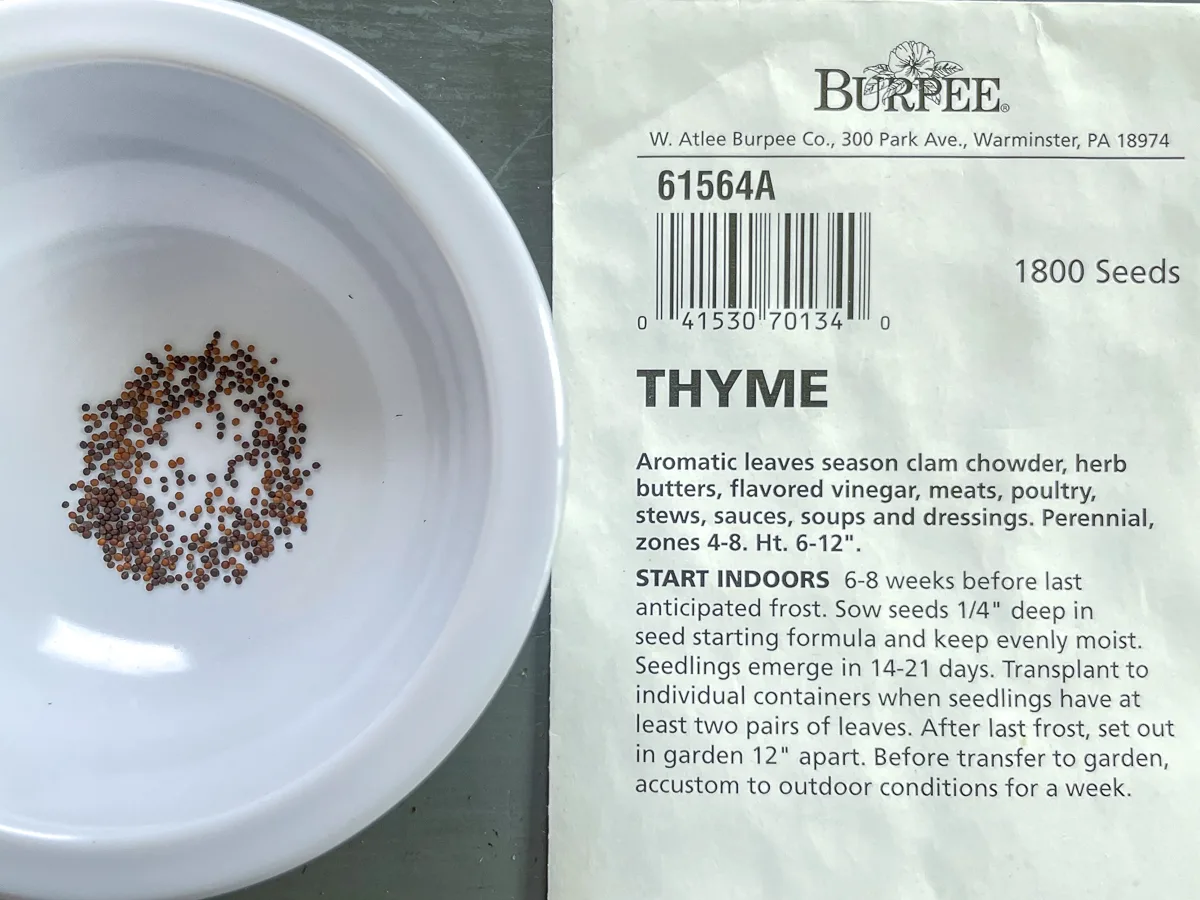
Sprinkle the seeds on the surface of damp seed starting mix in a tray or pot. I'm using biodegradable peat pots, which will be transplanted into a grow bag on my outdoor plant stand later.
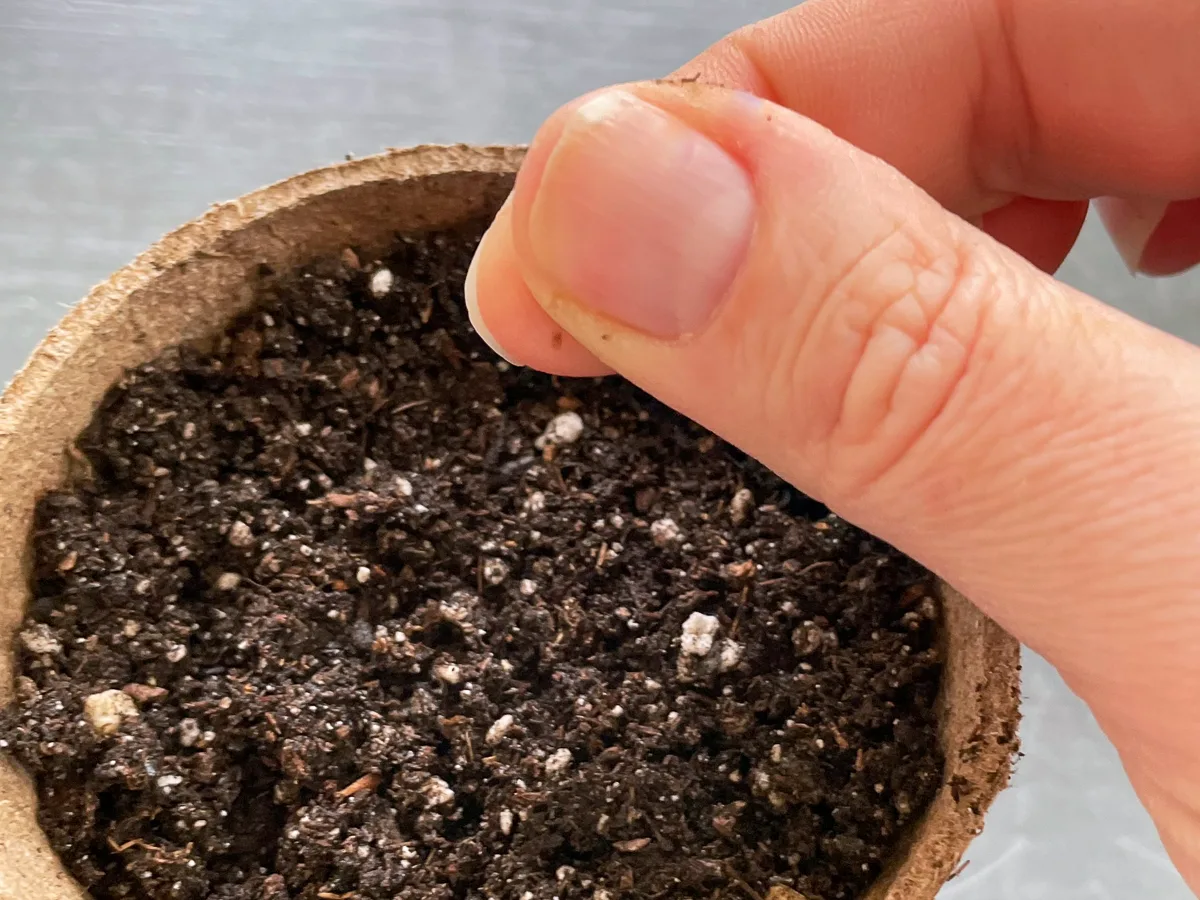
While my seed packet says to cover with ¼" of soil, thyme needs light to germinate. Instead, I sprinkled a fine layer of vermiculite over the surface, which allows light to penetrate while keeping the seeds protected.
Cover the container with clear plastic and place it under grow lights or on a sunny windowsill. Lift the plastic and mist the soil daily to keep it damp.
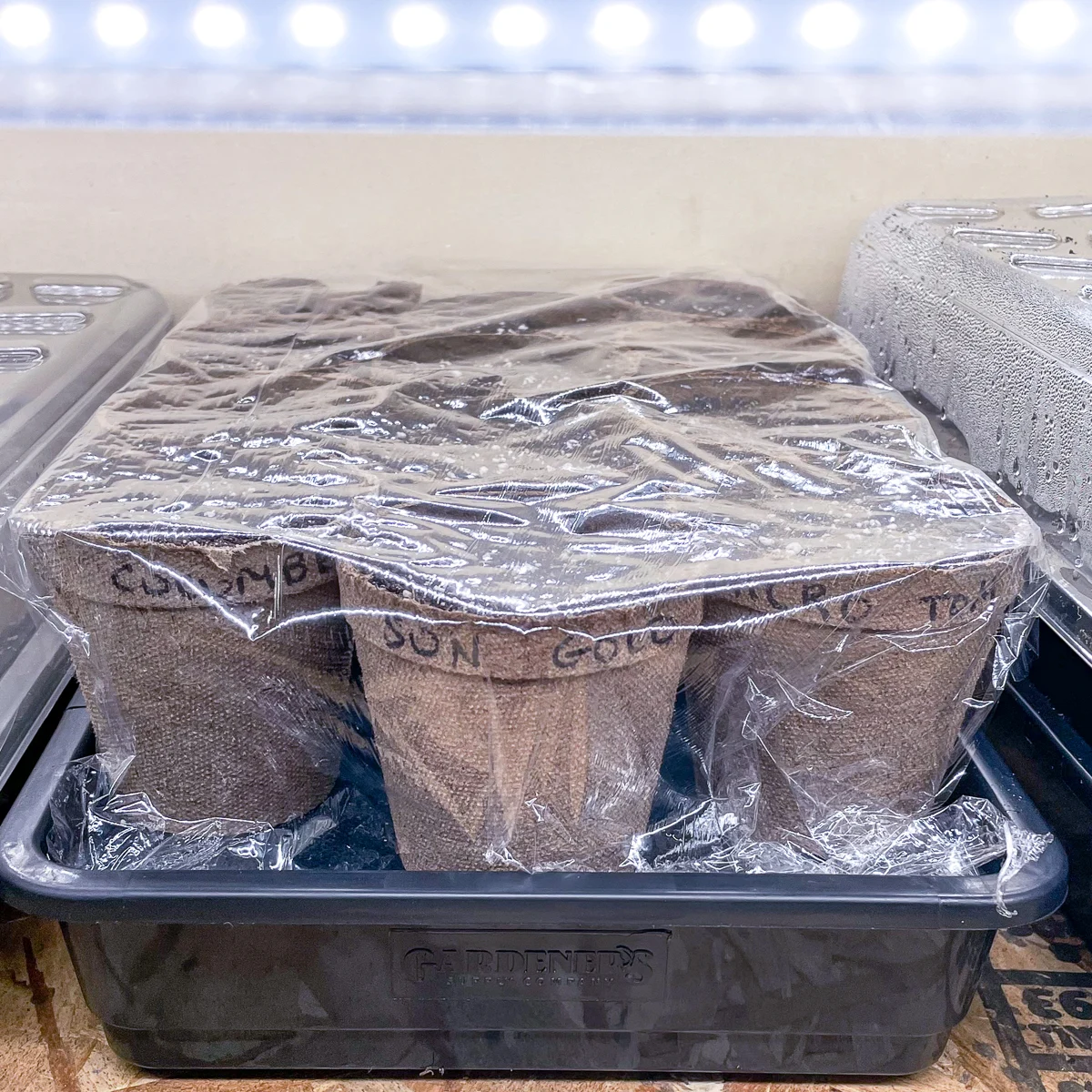
When the plants are about 4 inches tall, transplant them into a permanent location in the garden or container.
Starting thyme from cuttings
If you already have a healthy, mature thyme plant in your garden and want more, you can take cuttings. Here's how!
- Snip a 6-inch section of branch tip and strip the leaves from the bottom two inches.
- Place the bare stem in a glass of chlorine-free water and keep it on a sunny windowsill.
- Refill the water daily, as needed.
- In about a month, the cutting will develop roots. Then, carefully transplant the root ball into a 4 or 6-inch pot filled with soil mix and water it thoroughly.
- Grow the seedling for a month or two in a sunny location and then transplant it.
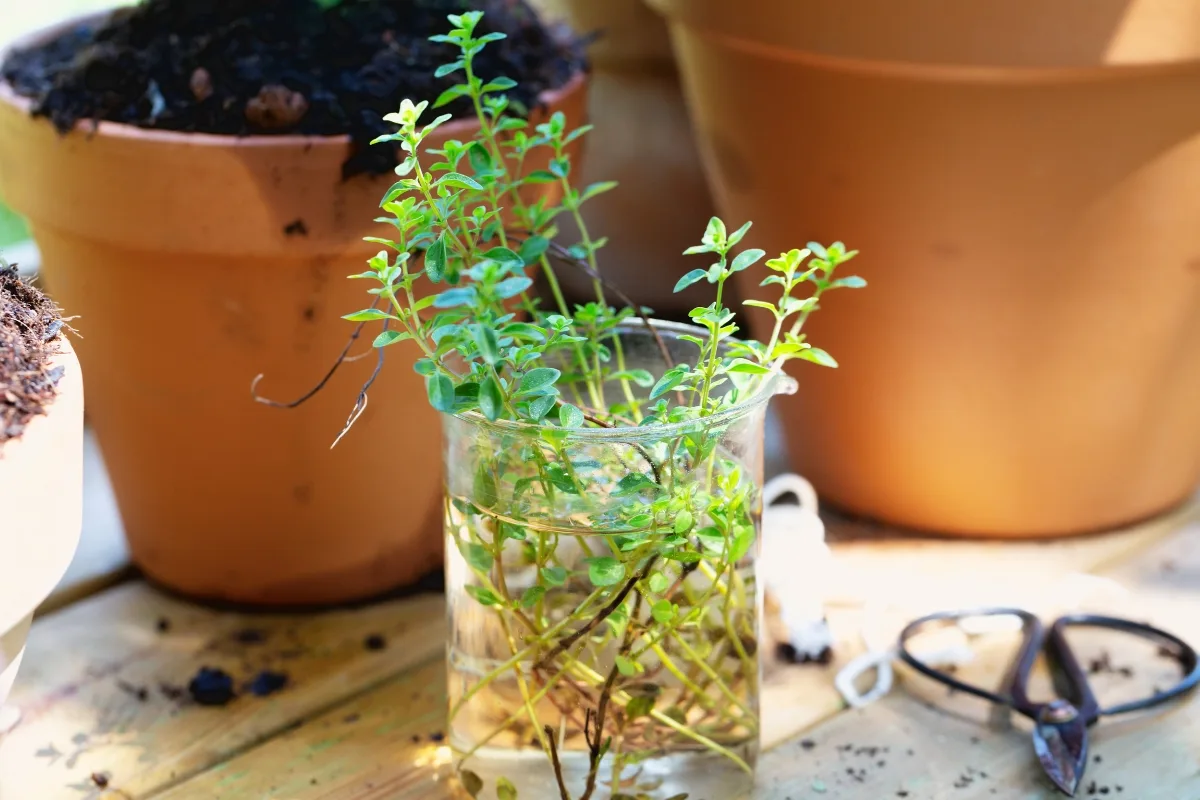
Starting thyme by root division
Mature plants with multiple stems and an extensive root system can be divided to create new plants.
- Water the plant thoroughly.
- Completely dig up the root ball.
- Divide the root mass and stems into two or three pieces using a sharp knife or garden scissors.
- Immediately replant the root sections and water them.
Planting thyme in the garden
If you started your thyme seeds indoors, you'll need to transplant them outside once the danger of frost has passed and they have grown to about 2-3 inches tall.
Before transplanting, it's a good idea to "harden off" your seedlings. This simply means acclimating them to outdoor conditions. Start by putting them outside for a few hours a day, gradually increasing the time over a week or two.
Here are a few things to keep in mind when growing thyme outdoors...
Sun and temperature
Thyme loves the sun, so you'll want to find a spot that gets at least six hours of sunlight a day. South-facing windows are usually a great choice if you're going for indoor gardening.
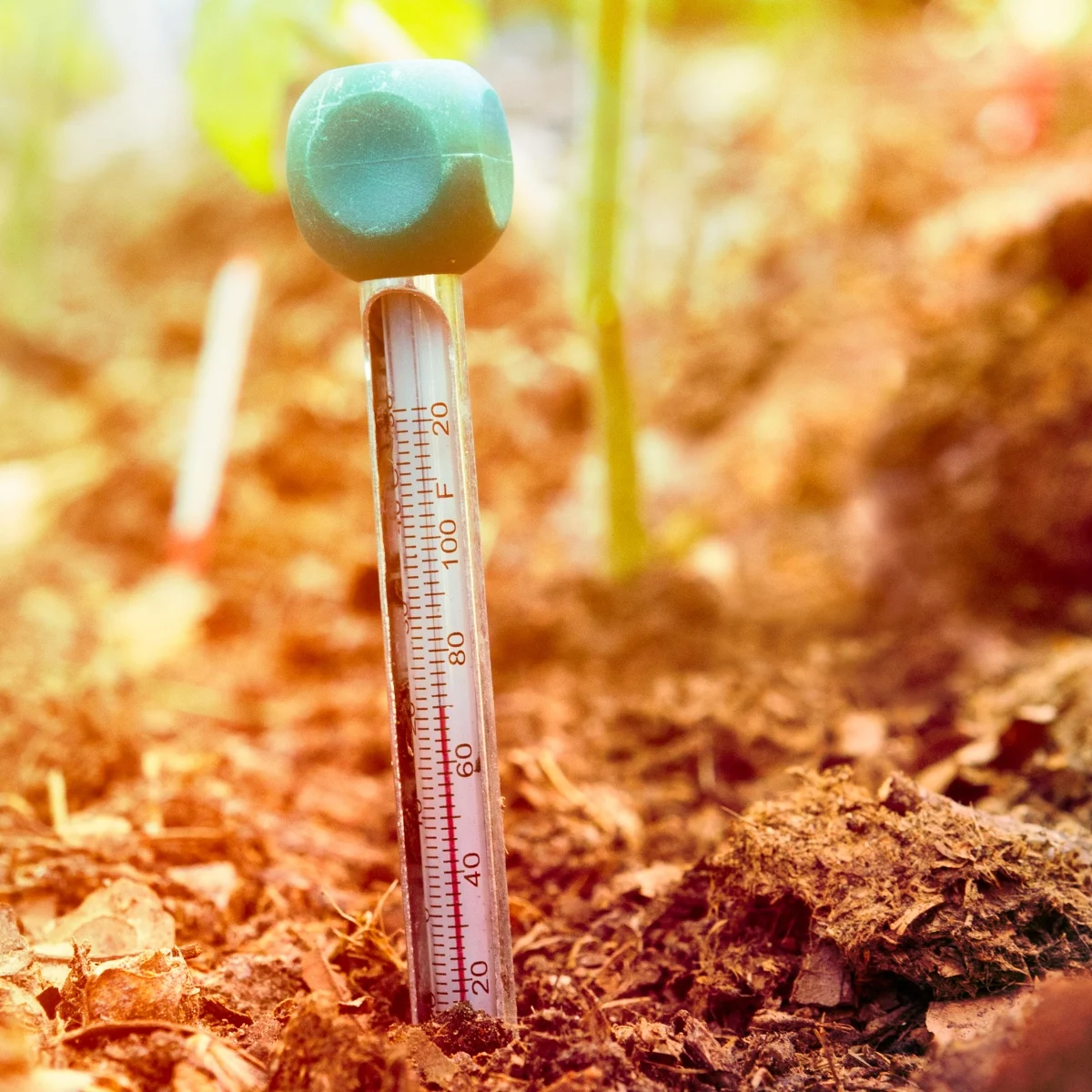
Temperature is also important. Thyme thrives in a range of 60 to 70 degrees Fahrenheit, so try to keep your plants in a spot with a consistent temperature within this range.
Soil
Thyme plants can thrive in soils unacceptable to many other plants and tolerate dry periods once established. It does need soil that drains readily, but most varieties will do fine if the ground is sandy and gritty. If your soil is too heavy or clay-like, just add some perlite or coarse sand to lighten it up.
As for pH, thyme likes it slightly alkaline, between 6.0 and 8.0. Not sure about your soil's pH? You can easily check it with a soil testing kit, available at most garden centers or online.
Water
Thyme doesn't like to have 'wet feet.' Water your plants lightly and keep the soil somewhat dry. Thyme is native to the Mediterranean, so it's more tolerant of drought than overwatering.
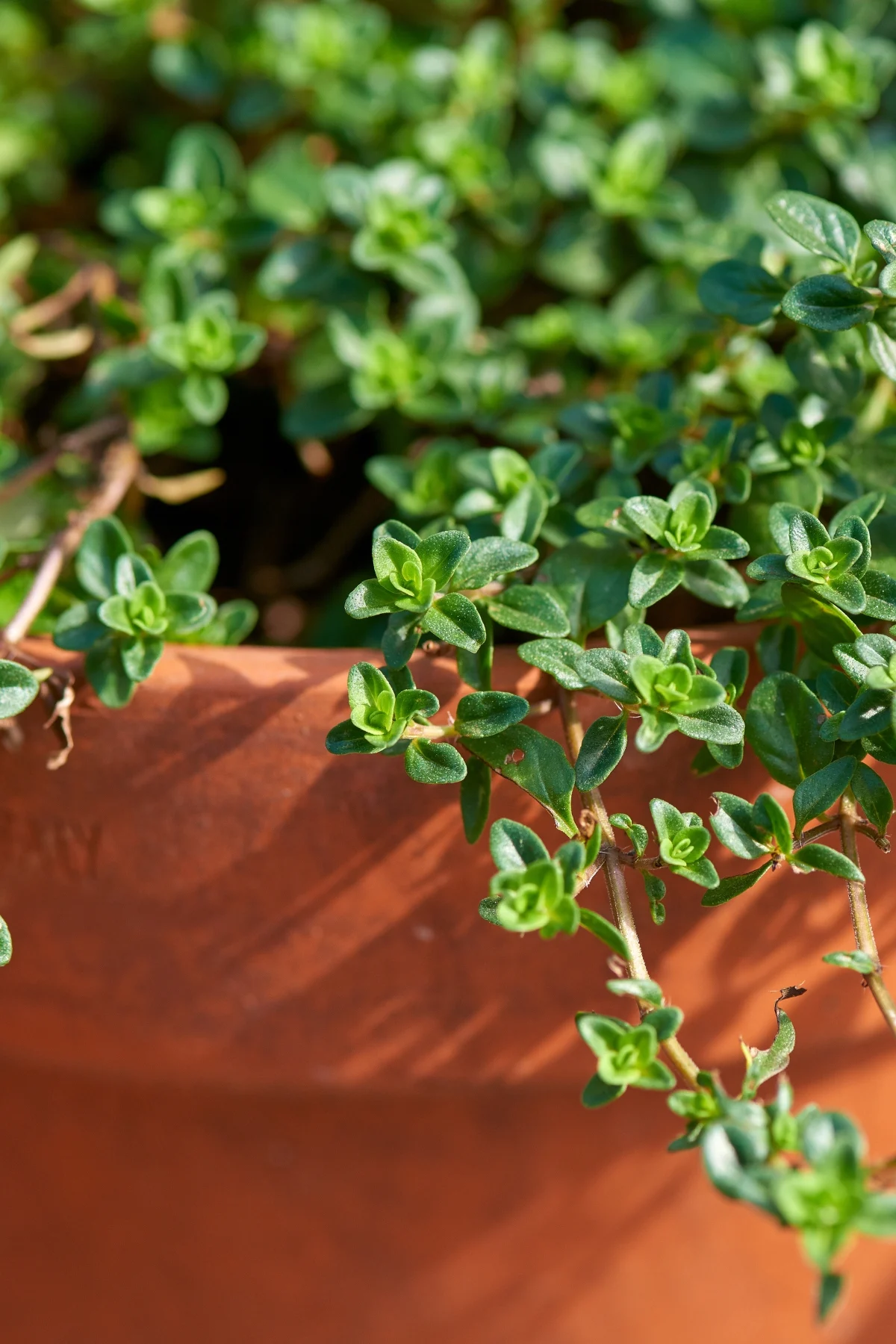
However, if you grow thyme in a container, fill it with a well-draining potting mix and water it more frequently than plants in the ground.
Fertilizer
Thyme isn't a big feeder, but a little bit of balanced, slow-release fertilizer can give your plants a helpful boost. I sprinkle a bit of Bio-tone starter fertilizer in the hole at planting to encourage root growth.
Established thyme plants do not need additional fertilizer in most situations, and too much fertilizer can lead to unattractive, spindly plants.
Caring for Thyme
One of the joys of growing thyme is that it's a 'cut and come again' plant. This means you can start to harvest your thyme as soon as it starts to bush out. Cut the sprigs you need, but always leave at least 5-6 inches of growth so that your plant can recover and continue to produce more leaves.
If you want to harvest lots of thyme for the kitchen, consider replanting about every three years. New plants produce abundant tender fresh leaves and don't have much woody growth.

Plants left to grow for longer benefit from regular pruning and harvesting to stimulate foliage growth. Ornamental plants usually need annual pruning to keep their shape compact and tidy.
So, what are you waiting for? Roll up your sleeves, don your gardening gloves, and get ready to embark on a fragrant journey filled with growth, greenery, and of course, plenty of thyme.
Check out these other edible plants you can grow from seed!

